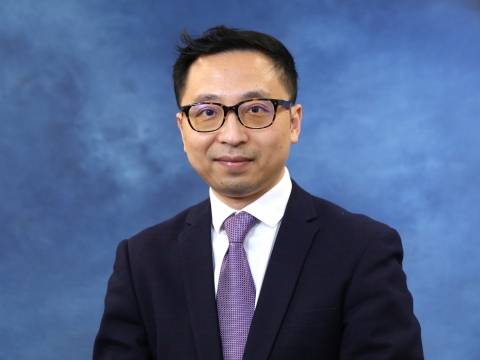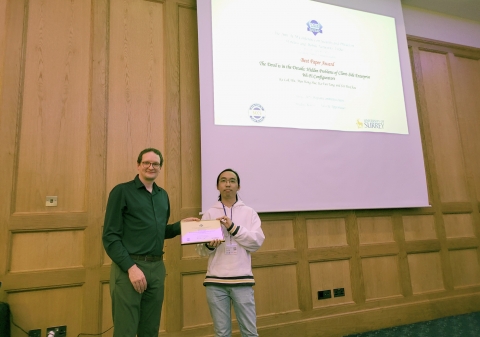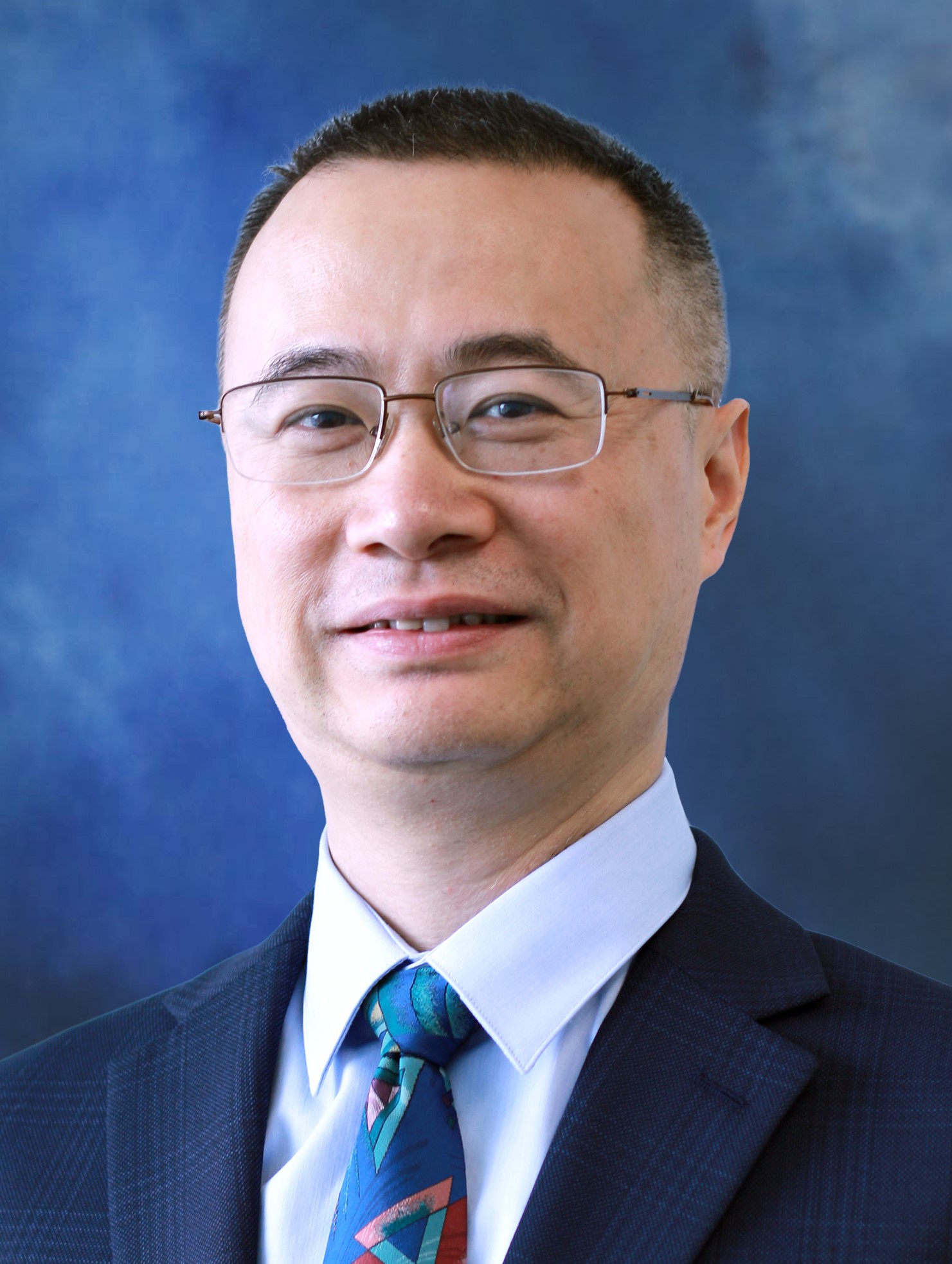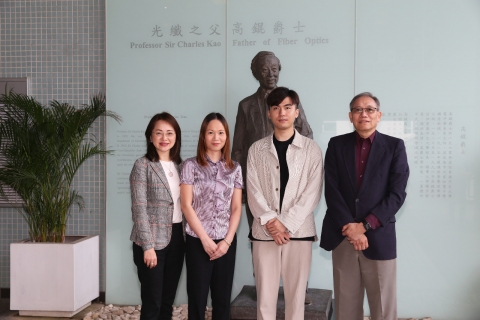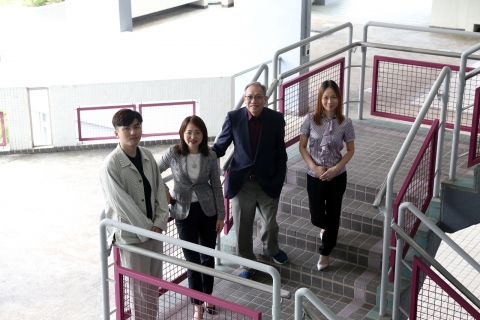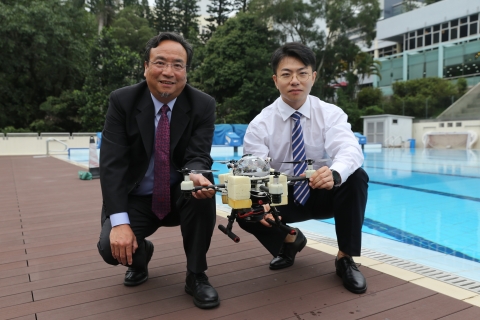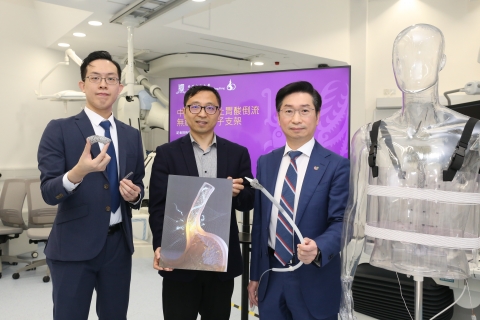Professor Zhang Li from Department of Mechanical and Automation Engineering has been granted HKD26.69 million by the Research Grants Council (RGC) Strategic Topics Grant (STG) 2023/24 to support his research five-year research project, titled “AI-assisted Microrobotic Platform for Minimally Invasive Interventions”. Professor Zhang's awarded project aims to apply AI to miniature robots for minimally invasive interventions. The project will address the challenges of integrating AI and microrobotics research, including control, imaging, performance in dynamic physiological conditions, and appropriate autonomy for intervention. The advanced technology and the outcomes from this joint research project will significantly contribute to Hong Kong, particularly in the emerging field of AI and medical miniature robots for minimally invasive medicine. The project team, composed of engineering experts and medical professionals from CUHK, HKU, CityU, PolyU, NTU LKCMedicine, and ETH Zurich. (Please see the attachment for the project details.) Professor Zhang said, "Autonomy and intelligence of medical robots are fundamentally important research topics across scales, via the STG funding support, we will put joint efforts with local and international partners on exploring the practical applications of medical miniature robots and the AI-assisted microrobotic platform for minimally invasive interventions." About Strategic Topics Grant and Theme-based Research Scheme The STG was introduced in August 2022. This new scheme is set up to support collaborative research in specific areas which can help Hong Kong overcome imminent challenges and tap fast-evolving opportunities. While TRS aims to focus academic research efforts of UGC-funded universities on themes of strategic importance to the long-term development of Hong Kong. Appendix Project details Project Coordinator: Prof Li Zhang (CUHK) Project Title: AI-assisted microrobotic platform for minimally invasive interventions Topic: Using Artificial Intelligence to Address Imminent Challenges in Health Care Miniature robots have presented promising ways for medical applications inside the human body. Due to their small size, they are ideal for active and targeted therapy in tiny-and-tortuous lumens which are hard-to-reach by conventional medical tools. However, several grand challenges need to be adequately addressed for in vivo uses, including the imaging and control, the performance in dynamic physiological conditions, and appropriate autonomy for intervention. Besides, integrating artificial intelligence (AI) and microrobotics research can open many new possibilities for boosting the clinical translation of miniature robots and achieving intelligent robotic platforms for next- generation minimally invasive interventions. This interdisciplinary STG project aims to apply AI to miniature robots for minimally invasive interventions, which will address the following key challenges: (1) how to introduce deep-learning algorithms for real-time and adaptive planning and control of reconfigurable microrobot collectives to undertake medical tasks in physiological environments; (2) how to apply AI-based methods to process the noisy raw images and optimize the control performance of the microrobot collectives against physiological disturbances; (3) how to simulate the physiological parameters of human body for pre-operative intervention evaluation and clinical training. To tackle these challenges, our team, which composes of engineering experts and medical professionals in the related fields, will work together to deliver: (1) an integrated deep- learning-based AI control strategy for environment-adaptive morphological control of microrobot collectives in physiological environments; (2) a human-scale magnetic actuation system integrated with real-time imaging tools for robust in vivo tracking and tele-operation of microrobot collectives; (3) an AI-based control scheme for autonomous and intelligent navigation of microrobot collectives in vivo with high adaptability in physiological environments; (4) a microrobotic Interactive Virtual Surgical Platform (μbot-IVSP) for human body simulation, pre- operative microrobotic intervention evaluation, and tele-operation practice. Our project by a research team with long-term close collaboration will generate outputs that provide fundamentally critical new data and references for the field. The advanced technology and the outcomes from this joint research project will significantly contribute to Hong Kong, particularly in the emerging field of AI and medical miniature robots for minimally invasive medicine. |
|

